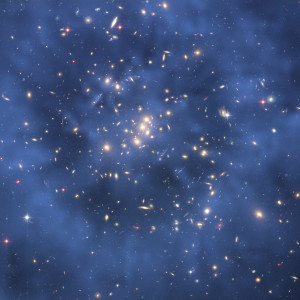Contents
Humanity has evolved throughout the ages but it will never be perfect, there are always new problems arising in the world. Although there have been some major breakthroughs since the new millennium: like the confirmation of dark matter, the discovery of exoplanets or the mapping of the human genome. There is still a very long way to go before we live in an ideal world and in this study will talk about them.
Biology
The chemical origins of life (Abiogenesis)
Abiogenesis (the original evolution of life or living organisms from inorganic or inanimate substances.)
One of the biggest issues in the scientific world today is regarding our existence and how we gained consciousness. Everyone in the modern day agrees that humans are made from atoms of elements but scientifically there is yet to be an explanation of how they came together to form breathing, thinking and emotional organisms.
A starting point for many scientists today is the Primordial Soup Hypothesis, A science lecturer Robert Shapiro summarized it as:
‘The early Earth had a chemically reducing atmosphere.
This atmosphere, exposed to energy in various forms, produced simple organic compounds.
These compounds accumulated in a “soup”, which may have been concentrated at various locations (shorelines, oceanic vents etc.).
By further transformation, more complex organic polymers – and ultimately life – developed in the soup. ‘
An experiment performed in 1952 (the Miller-Urey experiment) was one of the most important pieces in support for this theory. A flask with water, methane, ammonia and hydrogen were sealed this was then connected to a smaller flask with water and sparks to imitate lightning. After a week a pink liquid was present, this was then tested and it was found out that there were 5 amino acids present, the building blocks of protein, which provide a host of functions for organisms including catalysis without which organisms couldn’t survive. This provided proof of the second point of the Primordial Soup Hypothesis above.
Even today there is no model of the origin of life, most of the modern models take parts from theories dating back to the 1920’s. The most accepted hypothesis is that of the RNA world which was proposed in 1962 and named in 1986. RNA is an acid similar to the more well-known DNA but uses Ribose instead of Deoxyribose. After modern research it was found that it was possible for RNA’s to act as catalysts on other RNA’s, this meant that proteins didn’t have to be created or even that RNA’s created DNA and proteins due to the fact that they could carry genetic coding and auto catalyse.
Extra-terrestrial life
‘Two possibilities exist: Either we are alone in the Universe or we are not. Both are equally terrifying.’ Arthur C. Clarke, as quoted in Visions.
The search for sentient and possibly reasoning life is one of the most important scientific ventures to many, it could revolutionize the modern world by bringing anything from futuristic technology or open up branches of science that were previously non-existent. Multiple projects including SETI (Search for Extra-Terrestrial Intelligence) and the Keplqer space telescope are searching through the skies to find potential habitats for life.
One of the biggest arguments for life outside of Earth is probability. Due to the scale of the universe, many scientists (including Stephen Hawking and Neil Degrasse-Tyson) believe that it is ‘improbable for life not to exist in the universe’. There are an incomprehensible number of galaxies which each contain around 250,000,000,000 stars all with their own planets, for their not to be life somewhere on one of these planets is ridiculous. However the Drake equation reduces this number heavily by adding a number of factors including: the number of suitable stars, the fraction of those stars that have planets, the number of earth like worlds which end up narrowing the number of potential life harbouring planets (in the milky way) to 10,000.
But as Carl Sagan put it, our ideas are ‘plausibility arguments’ comprised of unknowns, hunches and assumptions. Science is yet to find a single alien microbe or anything ‘alive’ in the vast universe. SETI has not received a signal from an alien civilization in the 40 years its been active but the technology they have is growing more sophisticated each year, many hope it is only a matter of time before some sort of message is received from an extra-terrestrial source.
The Fermi paradox uses the theory that I talked about above; around probability. It says that:
‘Stars like the Sun are common, and most of the stars like the Sun are far older
Due to the probability, some of these stars would have earth-like planets and maybe even intelligent life
Some of these civilizations could have access to interstellar travel
Even at a slow pace of interstellar travel, the galaxy could be colonized in 10,000,000 years’
This supposedly proves the fact that there isn’t any extra-terrestrial life in the galaxy because if there were then we would already know, because they would rule over us and all the other civilizations in the milky way. A counter argument to this is known as the ‘zoo hypothesis’. It assumes that superintelligent life does exist, but does not contact or interfere with Earth so that the natural progression and evolution of life here is preserved and unaltered with.
Physics
Dark matter and energy
Now that we have the technology to scan the skies, we can finally explore the deepest most reclusive ends of the universe. We can scan stars and planets millions of miles away from billions of years ago, but no matter how any scientist adds up the mass of all the visible atoms in the observable universe, it doesn’t add up.
Not to be confused with antimatter (a material that has the exact opposite properties to that of ordinary matter and can cancel normal matter out), dark matter is something that hasn’t really been proven or detected directly, because it doesn’t absorb or emit any form of radiation or electromagnetic waves, but is 26.8% of all content in the known universe. Although it cant be seen, it was hypothesized by Jan Oort in 1932 as a filler to make up for the large amount of variation of what should be there (derived by calculations) and what can actually be seen and observed (known as baryonic matter).
Multiple theories suggest that dark matter is light enough to be fabricated by the LHC (Large Hadron Collider, one of the most important machines in physics today) but even if it was possible for it to be made, the detectors inside the collider would completely miss it. However, just like dark matter was found in the first place, the scientists could look at the missing energy and momentum to infer the effect the dark matter present. This is exactly what the 3 recently funded dark matter experiments are hoping for
Dark energy is another very mysterious concept that is vital in our universe it makes up the remaining 68% of the mass. During the 1990’s astronomers recording supernovas in the edges of the known universe discovered that the universe was actually expanding, this was contrary to what theorists predicted. Einstein was one of the first to realise that empty space was not as ‘empty’ as it seems, and that it has properties. One of these properties could be dark matter and since it is a property of space it wouldn’t get diluted or weakened with the expansion of space this also means the more space expands the more dark energy exists which causes space to continue expanding and at an ever faster rate too.
The measurement problem (observer effect)
One of the largest problems in quantum physics is the observer effect; simply put it is the fact that the variable you are measuring is almost always altered by you measuring it. In Quantum physics things exist in superposition (this means that it exists in all possible states) until we look at it. This is the notion behind Schrödinger’s cat where there is an equal chance of a cat surviving or dying in a closed box. The cat is (before you open the box to check) both alive and dead as there is no way of knowing but when you do look, you find an answer which then closes the superposition therefore not giving you an accurate representation of what was actually inside that box. Another example would be going to check your tire pressure, by checking you inevitably release some air causing the pressure to be different than before. The Hawthorne Effect is a variant of this but with something more tangible than quarks and nuclei, humans. It states that people act differently when they know they are being observed and change their behaviour because of it
These findings are significant because it revolutionised ‘old (Newtonian) physics’ where it didn’t matter if there was no one to perceive it. This resembles the thought experiment about the ‘tree falling in the forest with no one to hear it’ in Newtonian physics the answer would be ‘yes the tree did fall’ however after studying the measure problem the answer was now the opposite. It even went far enough to say that ‘matter doesn’t exist without conscience’.
There is little that can be done to combat this problem in most scenarios but sometimes by using the best instruments and recording devices or other unobtrusive observational techniques the physical effect can be reduced to the point where it doesn’t affect the results.
Chemistry
The search for elements
The 9th of April 2010 was a special date for Chemistry; Element 118 was finally synthesised. This meant that Dmitri Mendeleev’s periodic table of elements was finally completed. Created in 1862, the periodic table was a crude encyclopaedia of all the known elements in groups that acted similarly. In the 1940’s elements began to be artificially synthesised, this let the table grow to more than the original 92. Today we use particle accelerators to crash large nuclei together and create ‘superheavy’ elements that only last for nanoseconds.
There are elements that are yet to be found in nature or created in a laboratory but due to the information we already have on existing elements we can predict the characteristics of these undiscovered elements. Many elements have been created in the lab and then been found in nature; Plutonium, Astatine and Neptunium are a few examples. There are yet to be elements that are observed like ‘element 125’ but when it is observed, scientists will already know how it behaves and reacts, it will be added to a new row of the periodic table.
Relativity dictates that there can only be elements with 137 protons because otherwise the electrons orbiting would have to go faster than the speed of light and that hasn’t been proved possible yet. Although, more complex calculations suggest that the limit of 137 is false, Walter Greiner, a nuclear physicist at Johann University in Frankfurt, said ‘The periodic system will not end at 137; in fact it will never end’.
However, scientists don’t know if there are new atoms in space that were formed in conditions that couldn’t possible happen on earth. It would be impossible to find an element that would fit in between Hydrogen and Uranium but after that: it would be very possible. Originally, it was believed that there was a new element ‘nebulium’ that gave planetary nebulae their characteristic colour but after more research it was discovered that it was actually an isotope of oxygen that was only formed in space. This example shows how little we know about space and how likely it is for there to be many more elements than we expect.
Sustainable energy
With oil reserves running out and Carbon Dioxide emissions rising faster than ever there has never been a greater need for a new ‘green’ form of energy. The two brightest prospects for solving the energy crisis both lack the same thing: an efficient catalyst.
Artificial photosynthesis is the idea of replicating the process that plants use to create energy. Plants convert Carbon Dioxide and water (two abundant resources on earth right now) into energy in the form of sugar. If humans could replicate this in technology then they could effectively produce limitless amounts of energy. The biggest problem in recreating photosynthesis is splitting the water molecule, Hydrogen by itself will be the fuel as it can be burnt or converted into a fuel cell. Splitting the water requires an inefficient amount of energy, modern solutions use Cobalt and Nickel but the problem lies at a fundamental level. How plants catalyse the reaction is not understood yet, once this happens we can copy it, plants use 4 Manganese ions but the process is so complex that scientists cant duplicate it yet. Substitutes like Cobalt and Titanium are being used and when they are perfected the way energy is harvested will be revolutionized.
Using biomass for fuel has been happening for 1000’s of years but for it to occur on an industrial scale it has to be incredibly efficient. There are a lot of cons with biofuel as the plants required take up arable land that could feed farmers or be sold so the plants being grown must be worth the space they are taking up. Lignin, a complex polymer found in cell walls, is incredibly difficult to break down into fuel but scientists at the University of Illinois have used a nickel-based catalyst to aid the decomposition. There are still many problems with biofuel, one of the largest being the infrastructural changes that will be required if biofuel becomes popular. These are so large that it is more likely for the fuel to be converted so that it is compatible with existing technology, that would be an expensive and inefficient process.
There are so many issues with biofuel but it is acknowledged that if an effective catalyst is produced it will provide multiple solutions.
Conclusion
The dilemmas listed above are all major issues that the world will have to face in the coming years and they are all incredibly important in the advancement of society but to give one priority over the others is a difficult and rather pointless decision to make.
I believe the biggest problem science has and is currently facing isn’t always that bad. In my opinion, I think that morality is the largest concern is science (although it only really applies to Biology and Chemistry). The question that many people often find asking themselves is about whether some things should be left alone. Throughout history there has been a fine line between morally ambiguous experiments and the need to further the understanding of humanity. Without opposition Biologists could have achieved incredible, yet possibly ‘wrong’, things. The opposition has kept science grounded and stopped it from possibly making large mistakes. On the other hand, it has also limited science in many places because people didn’t feel comfortable with what was happening.
Throughout history, geniuses have been shunned by society because of the popular belief they all shared. Take Galileo and Copernicus for example, they were excommunicated, banned and placed under house arrest by the church due to their controversial -yet correct- beliefs. Today there are still debatable topics in science like stem cell research, cloning and evolution that are being halted because of the public. Like I said before, this may not be a bad thing but it does also seem to be very problematic for researchers who are genuinely trying to make things better.
There are studies going into technology that could make it possible for thoughts to be read to combat terrorists or murderers before they end up doing harm but in turn it could also be used for mass surveillance or to help turn a country into a police state like in 1984. Another study looks into genetic sequences of babies, which can be found inside a pregnant mothers bloodstream, that will enable doctors to identify any problems or complications that may occur in childbirth or later in the baby’s life but this puts a babies life into the hands of its mother which some may view as unacceptable or immoral.
In the future more and more technology will be created that will let humans do more and more incredible things but these advancements may lead to disastrous outcomes. Humans may end up being able to do things which they probably shouldn’t be able to do and have power and responsibilities that they weren’t designed for.
This article was contributed by Kashif (from UK) who is a keen science student.







